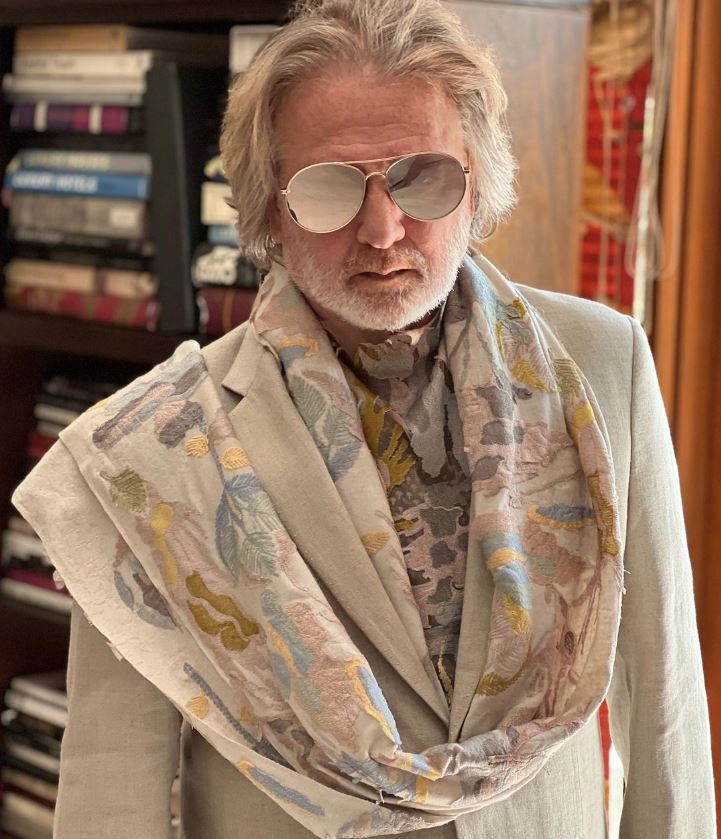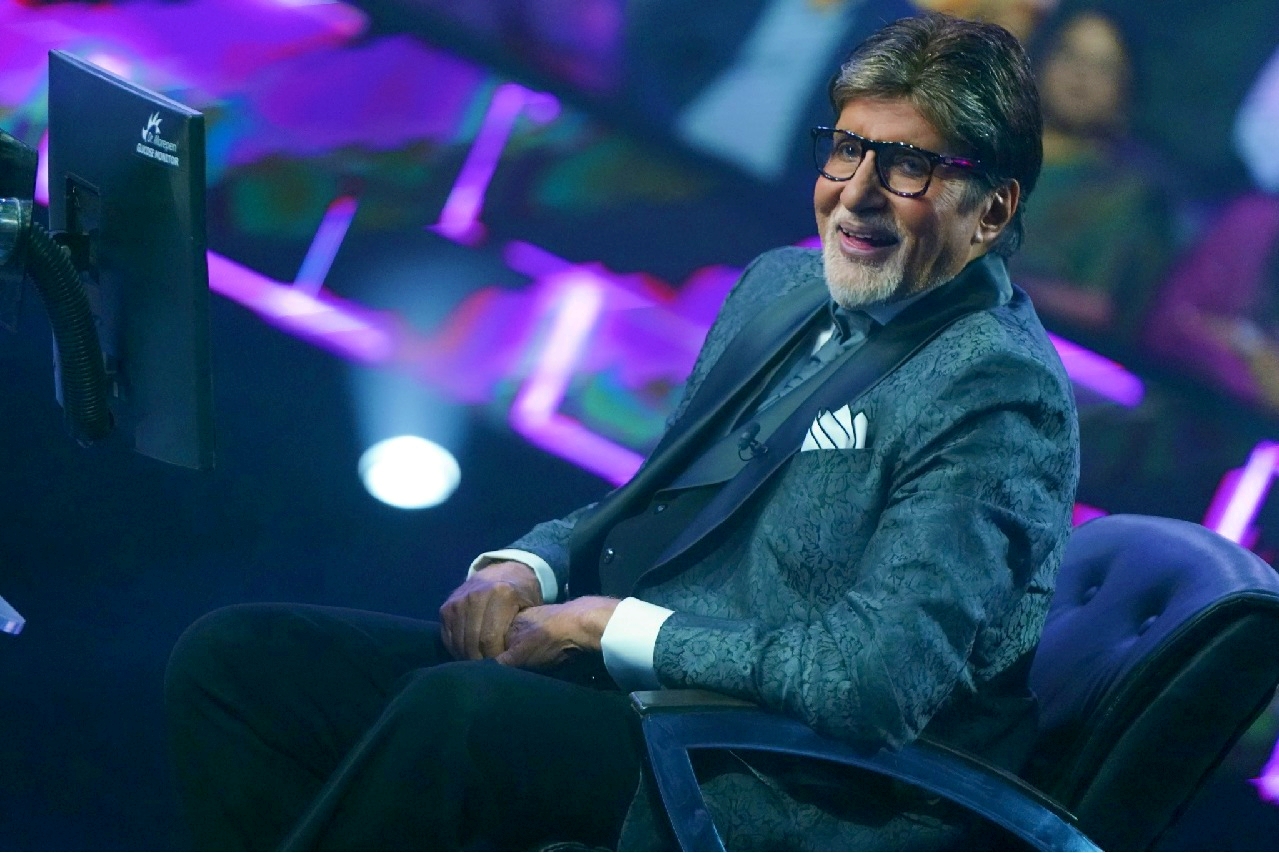Rohit Bal’s passing at 63 from a heart attack on Friday is one of those moments that shakes the fabric of an industry. It’s not just that he was a big name in fashion. It’s that he was a whole school of thought wrapped up in one extravagantly styled package. People in fashion talk about “pioneers,” but he was a pioneer in the truest sense. He wasn’t content with just making beautiful clothes. He wanted to put Indian craftsmanship on the world stage.
From the meticulously embroidered lotus motifs to the plush, draping velvets, he crafted his own brand of grandeur. Bal had a flair for showmanship. He understood that fashion wasn’t just about clothes but about creating an experience. His runway shows were theatrical spectacles, complete with dramatic staging and models adorned in heavy, luxurious designs, exuding the kind of old-world glamour rarely seen in an era dominated by minimalism. The designer had only two weeks ago unveiled his collection at the Grand Finale of Lakmé Fashion Week X FDCI.
People who knew him talk about a certain mischievous edge that made him unforgettable. He wasn’t just flamboyant on the runway. He lived his life with the same energy, a man of fine tastes and strong opinions. With his signature blonde hair and flair for drama, he looked every bit the part of the designer, yet he had a charm that felt more like an artist living on his own terms. Rohit was known for holding court at his parties, an entertainer as much as a creative. He would fill a room with laughter and stories, dressed as extravagantly as his designs.
Self-Taught Maverick
Bal was born on May 8, 1961, in Srinagar, which is famed not only for its scenic beauty but also the rich craftsmanship of artisans. It’s telling that he didn’t grow up amidst the sleek, glitzy world of runways and flashbulbs but rather in the textured, complex region of Kashmir. No fashion schools, no formal education in design (apart from a short NIFT course), just a keen eye and the artistic sensibility that Kashmir seems to bequeath to its children. Bal went to Burn Hall School in Srinagar, then Delhi Public School (after moving to New Delhi because of rampant insurgency), and finally St. Stephen’s College, where he studied history. Apart from his childhood home, it was there in the study of the past that he found inspiration to bring elements of Indian heritage into his work.
In 1986, he and his brother Rajiv Bal launched a small venture named Orchid Oversea Pvt. Ltd., but it was his independent label (launched in 1990) that set things in motion. In many ways, he was self-taught. By the time he came onto the fashion scene in Delhi, he had already developed his signature style. He didn’t enter the industry to fit in. He entered it to make his mark. Bal’s style was bold from the start. He wasn’t interested in the restrained elegance that many other designers leaned toward. He wanted grandeur, drama, and an almost theatrical sense of beauty. The flamboyant Gudda (as he's lovingly called in the fashion scene) did it all without compromising on authenticity.
Signature Style
If there’s a single word that captures Rohit Bal’s essence, it’s opulence. His trademark motifs the lotus and the peacock became symbols of his brand and were emblematic of India itself. The lotus, in particular, was a Bal favorite, appearing in collections year after year, intricately embroidered, bejeweled, reimagined in ways that could only be his. In Bal’s hands, the lotus wasn’t a delicate flower; it was a bold, resplendent design element, a nod to India’s heritage that felt lush and alive, not dusty or antique.
Then, of course, there were his fabrics: velvet, brocade, and silk, usually in rich, jewel tones. His collections were saturated with deep reds, emerald greens, royal blues, and golds, colours that exuded warmth and grandeur even under the harshest runway lights. His impossible-to-ignore ensembles were heavy and detailed. They were about occupying space, about owning it.

Crafting Icons
When he styled Amitabh Bachchan for Kaun Banega Crorepati, he brought sophistication and elegance to Indian television in a way that made the country take notice. When Big B walks onto the set of in the designer's custom suits and bandhgalas, he looks like royalty. The refined, understated sophistication of Bal’s designs add a layer of masculine elegance to the show. One tweet from Bachchan in 2011 read:
“Designer for KBC on my clothes, by Rohit ‘Gudda’ Bal … dynamic and so good with colors .. a kid in shorts in Srinagar, now celeb ! The look for KBC starting August 2011 … Rohit Bal at his best”. “Another look for KBC in August 2011 .. hmmm ! ” (sic).

Bal’s influence wasn’t limited to India. His work was seen, appreciated, and worn globally. His work found its way onto the backs of international stars like Pamela Anderson and Cindy Crawford. There’s something audacious in the fact that Bal’s designs were a full-throated homage to Indian heritage yet captured the imaginations of Hollywood icons. He wasn’t catering to Western tastes. Rather, he was introducing the world to the idea of Indian luxury. Bal’s pieces on Hollywood celebs showed that Indian design could be as glamorous and as desirable as anything out of Paris or Milan.
Artist With Entrepreneurial Flair
For a designer with such a unique vision, Bal wasn’t shy about collaborations outside the realm of clothing. Over the years, he has been the brand ambassador for Omega, partnered with international shoe designer Christian Louboutin and with Titan’s Nebula watches. His collaboration with Louboutin was emblematic of his style: exquisite, intricate and brimming with personality. It was a merger of two powerful aesthetic visions.
Then there was his work with Khadi Gram Udyog, where he married his love for traditional Indian textiles with a desire to promote sustainability and craftsmanship. For Bal, khadi was a textile that carried with it the weight of history and tradition. His khadi designs were rooted in simplicity, yet each piece was meticulously detailed. This collab was a lesson in how luxury and sustainability could coexist.
Rohit Bal’s passing leaves a void that feels impossible to fill. He redefined what it meant to be a fashion designer in India, making luxury accessible yet aspirational. Gudda was never about fleeting trends. He leaves behind a legacy about a way of thinking, a way of seeing fashion as art, as tradition, as a form of personal expression. As the fashion world mourns, it also celebrates a man who showed us that Indian luxury was more than possible. It was inevitable.



